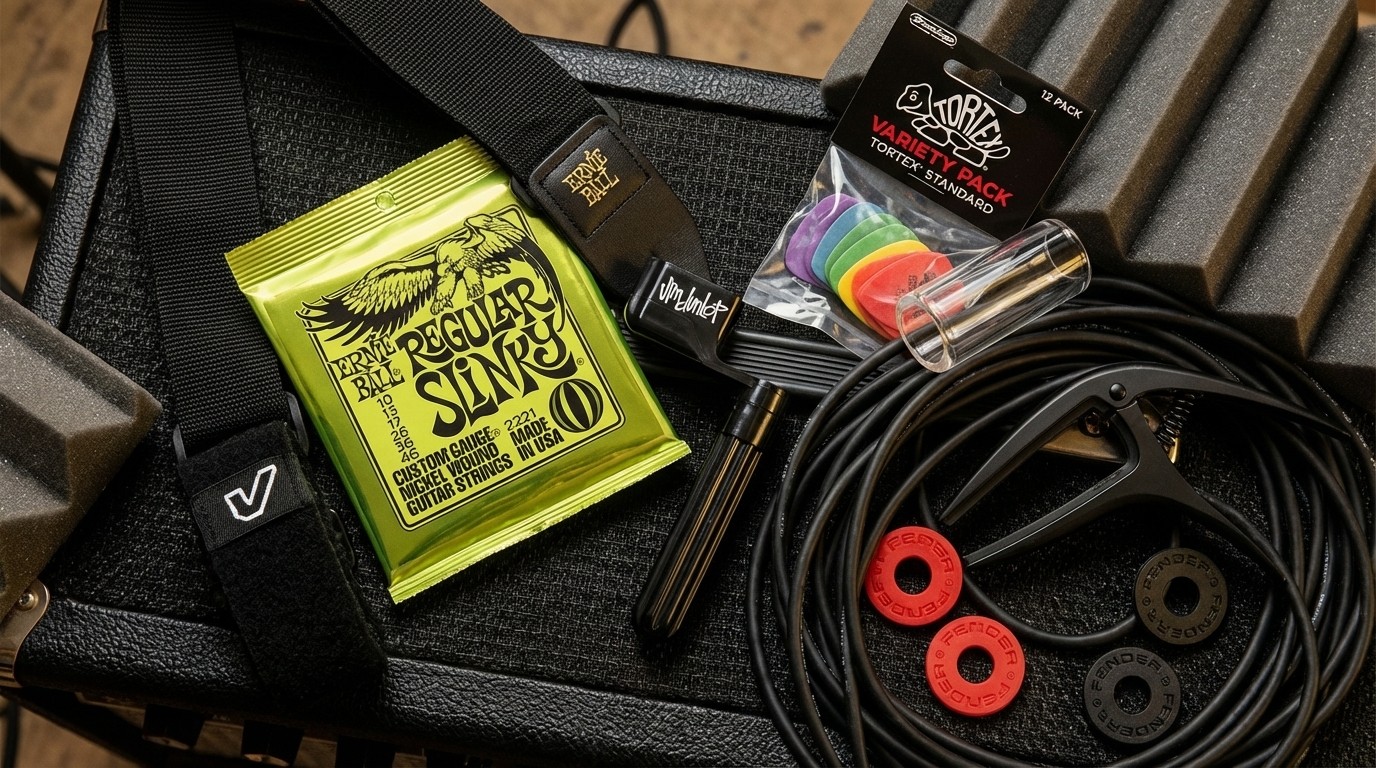Stevie Ray Vaughan Lesson: How to Play "Couldn't Stand the Weather"
An in-depth look at the title track to Vaughan's second album.

Stevie Ray Vaughan’s distinctive playing style is earmarked by equal parts pure power, intensity of focus, razor-sharp precision and deeply emotional conviction. And then there’s his tone—probably the best Stratocaster-derived sound ever evoked from the instrument.
Stevie tuned his guitar down one half step (low to high, Eb Ab Db Gb Bb Eb), a move inspired by one of his biggest influences, Jimi Hendrix. He also preferred heavy gauge strings: high to low, .013, .015, .019, .028, .038, .058, occasionally switching the high E string to either a .012 or .011. To facilitate the use of such heavy strings, Stevie’s guitars were re-fretted with large Dunlop 6100 or Stewart-MacDonald 150 fretwire.
Let’s begin this lesson with a look at the title track from Stevie’s second album, Couldn’t Stand the Weather. The song begins in “free time” (no strict tempo).
While brother Jimmie Vaughan tremolo-strums the opening chords—Bm-A7-G7-F#7—Stevie adds improvised solo lines (see transcription bars 1-8): over Bm, Stevie sticks with the B blues scale (B D E F F# A), over A7 he utilizes the A blues scale (A C D Eb E G) and over G7 he uses G blues (G Bb C Db D F). Strive to recreate Stevie’s precision when it comes to his articulation.
Over Jimmie’s F#7 chord, Stevie plays a first inversion F#7#9, which places the third of the chord, A#, in the bass (as the lowest note). (Stevie employed this same unusual voicing for E7#9 in “Cold Shot.”)
A four-bar, R&B/soul-style single-note riff follows, doubled in octaves by guitar and bass (see bars 9-17). Played four times, two extra beats of rest are added the third time through. This is shown as a bar of 6/4 in bar 13 of the transcription.
In bars 18-23, Stevie adds a very Hendrix-y rhythm guitar part, played in 10th position and beginning on beat two with an F octave fretted on the G and high E strings, strummed in 16th notes. Stevie maintains the rhythmic push of steady 16ths through most of the riff by consistently strumming in a down-up-down-up “one-ee-and-a” pattern.
All the latest guitar news, interviews, lessons, reviews, deals and more, direct to your inbox!
At the end of bar 18, barre your middle finger across the top three strings at the 12th fret, and then bend and release the G and B strings one half step. As the notes are held into the next bar, add subtle finger vibrato. Keep your fret-hand thumb wrapped over the top of the fretboard throughout the riff, using it to fret the D root note on the low E string’s 10th fret. Stevie intersperses this low root note into the lick in a few essential spots, akin to Hendrix on his songs “Freedom” and “Izabella.”

Stevie displays his true brilliance as an improviser when playing over a slow blues. All of the following examples are played in the key of G, utilizing the G blues scale (G Bb C Db D F) as a basis. Across the first two bars of FIGURE 1, I play two- and three-note chord figures against the low G and C root notes, fretted with the thumb. On beat three of both bars, I play a trill by barring the index finger across the D and G strings and then quickly hammering on and pulling off with the middle finger one fret higher on the G string.
When playing bar 3, keep your index finger barred across the top two strings at the third fret while bending notes on the G and B strings. On beat two, quickly hammer on and pull off to the fourth fret on the high E string. This G-Ab-G hammer/pull is a staple for Stevie, used in myriad different and creative ways.

Another essential element of Stevie’s slow-blues lead playing approach is the use of Albert King–style multiple-string bends. As shown in FIGURE 2a, I bend the high E string up one whole step at the eighth fret using the ring finger (supported by the middle) and simultaneously catch the B string under the fingertip and bend it up a whole step as well so that it “goes along for the ride.” In FIGURE 2b, I catch the top three strings under the fingertip. It will take practice to build up the strength and “finger traction” to execute these bends properly.



FIGURES 3a and 3b illustrate another way to add pull-offs on the high E string, this time fretting A and then pulling back from Ab to G. This is followed by repeated pull-offs on the B string, illustrated more clearly in FIGURE 3c. FIGURES 4a and 4b offer two more permutations of this idea.




Another nod to Albert is the use of fingerpicking to accent notes on the high E string. I use my middle finger to pick and snap the string back against the fretboard, as illustrated in FIGURES 5a–5f. Notice in FIGURES 5b, 5c and 5e the use of a half-step bend at the seventh fret on the high E string. Albert was a master of microtonal bending, a technique learned well by Stevie.


Stevie devised some unique position shifts, utilizing bends and slides on the G string. FIGURES 6a–c present three examples.
The use of the notes A, Ab and G on the high E string allude to the V (five) chord, D, and the D blues scale (D F G Gb A C). FIGURE 8a illustrates the scale, and FIGURES 7 and 8b–d offer examples played over the V chord. Another staple of Stevie’s style is the use of slides on the G string, exemplified in FIGURES 9a–c.






Guitar World Associate Editor Andy Aledort is recognized worldwide for his vast contributions to guitar instruction, via his many best-selling instructional DVDs, transcription books and online lessons. Andy is a regular contributor to Guitar World and Truefire, and has toured with Dickey Betts of the Allman Brothers, as well as participating in several Jimi Hendrix Tribute Tours.

